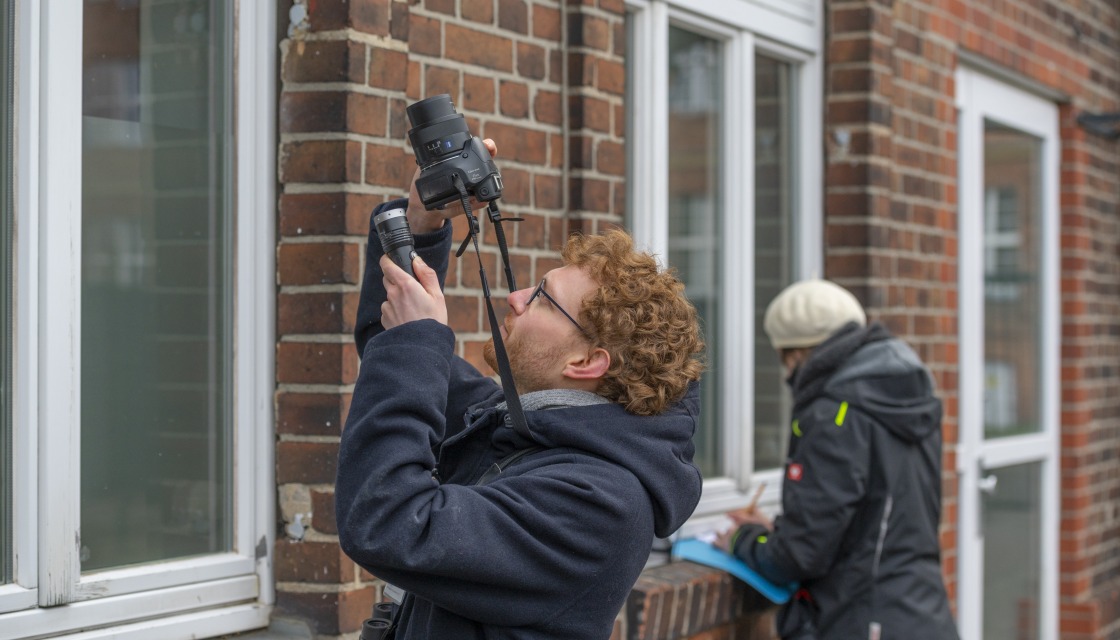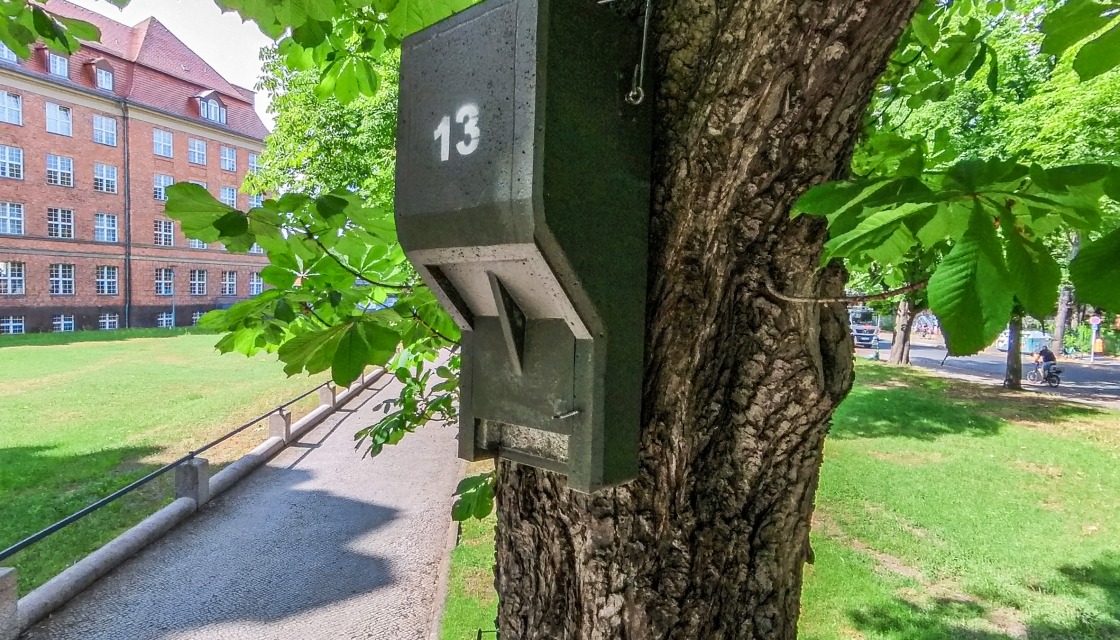What does an industrial site have to do with urban nature? And how do you ensure species protection and biodiversity when you build a new district? For Siemensstadt Square, these are not just theoretical questions, but are also very practical for implementation. Although the future district is being built primarily for people, cities have long since become crucial centres for biodiversity.
Over the years, a number of species have settled on the industrial site, which is still heavily sealed. They will be protected and then relocated for the construction project.
In 2019 species protection experts began to create an inventory of the animals, plants and their habitats present on the site. The biologists walked through the site in the evening with bat detectors, torches, and cameras to document the roosts, flight paths and hunting grounds of the bat species. They checked groves, green spaces, and buildings for their suitability as habitats for birds, bats and old wood beetles.

Based on this mapping, the experts prepared a species protection report for the area. This specifies concrete avoidance and compensation measures designed to minimise both the impact on and disturbance of the affected animal species. Before any demolition work is carried out, the relevant buildings and areas are inspected again for animal roosts. Habitats that are lost in the new Siemensstadt Square will find a new place in the neighbourhood or in the surrounding area in cooperation with the Spandau district office. This is also both accompanied and monitored by experts from an ecological construction supervision team. With their help, replacement nesting sites for breeding birds and bats have already been created on the Siemens site.

Siemensstadt Square also brings new opportunities for urban nature - especially where areas are unsealed. A largely native plant mix is planned for these open spaces, which will serve the local insect and bird world. But tree species from southern Europe will also be found here in the future because they are robust and fit well into the increasingly warmer and drier urban climate.
The mix is important: the greater the variety of species, the more likely the green spaces will survive the heat, drought, and heavy rainfall. As is so often the case, diversity counts.